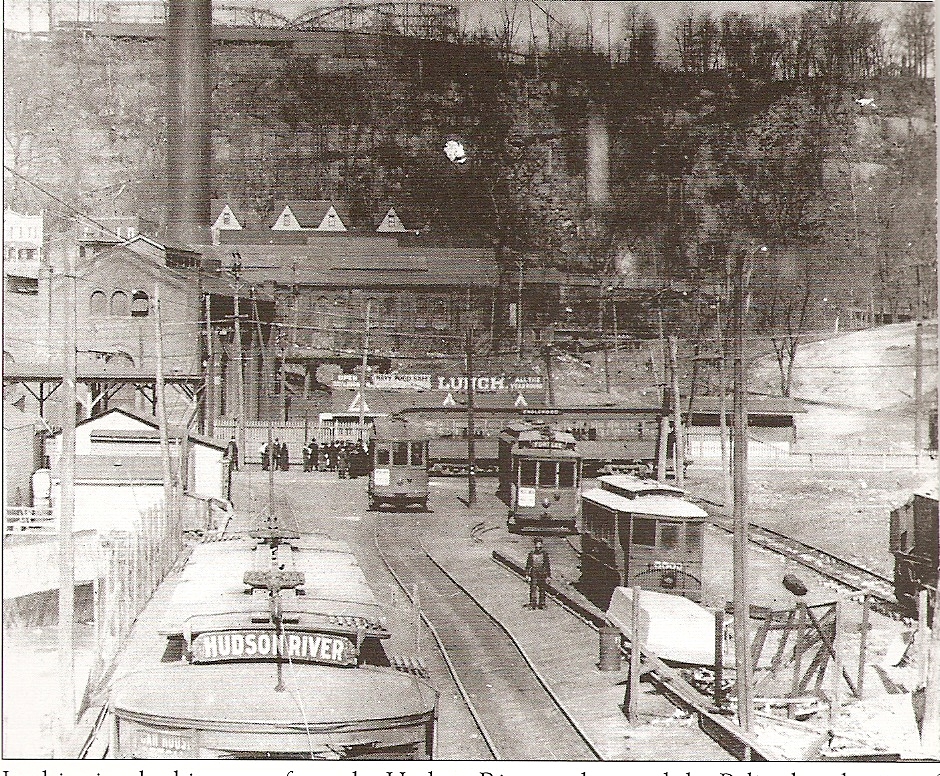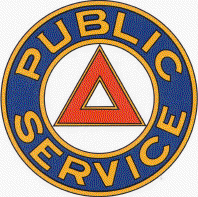|
Transport Of New Jersey
Transport of New Jersey (TNJ), earlier Public Service Transportation and then Public Service Coordinated Transport, was a street railway and bus company in the U.S. state of New Jersey from 1917 to 1980, when NJ Transit took over their operations. It was owned by the Public Service Corporation, now the Public Service Electric and Gas Company. History The Public Service Railway operated most of the trolley lines in New Jersey by the early 20th century. Public Service lines stretched from northeast New Jersey to Trenton, New Jersey, Trenton, and then south to Camden, New Jersey, Camden and its suburbs. Major parts of the system were: *The Newark Public Service Terminal, a two-level terminal in downtown Newark, New Jersey, Newark. *The North Hudson County Railway, Hoboken Inclined Cable Railway, an elevated railway from Hoboken Terminal up the New Jersey Palisades into Jersey City, New Jersey, Jersey City and south to near Journal Square. *The Newark-Trenton Fast Line, an interurb ... [...More Info...] [...Related Items...] OR: [Wikipedia] [Google] [Baidu] |
Public Service Corporation
The Public Service Corporation (PSC) was an energy and transportation company in New Jersey. It was formed to shore up financing and development of New Jersey's streetcar and power companies at a time when they were growing but exhausting capital. It did this by leasing their operations or buying them outright, and using the size and integration of the systems to get favorable financing for improvements. Its energy utility became the Public Service Electric and Gas Company. Its transportation business became the nucleus of New Jersey Transit's bus network, along with the Newark subway system. History Formation In the 1890s, gas lighting was a mature business with small technological advancing growth, but new competition from electricity. Streetcar companies were also well established, but the disjointed network limited the operators, reduced profits, and made it difficult to finance improvements. Some were losing money. Similarly, the electrification of the state had proc ... [...More Info...] [...Related Items...] OR: [Wikipedia] [Google] [Baidu] |
Journal Square
Journal Square is a business district, residential area, and transportation hub in Jersey City, New Jersey, which takes its name from the newspaper ''Jersey Journal'' whose headquarters were located there from 1911 to 2013. The "square" itself is at the intersection of County Route 501 (New Jersey), Kennedy Boulevard and Bergen-Lafayette, Jersey City, Bergen Avenue. The broader area extends to and includes Bergen Square, McGinley Square, India Square, the Five Corners, Jersey City, Five Corners and parts of the Marion Section. Many local, state, and federal agencies serving Hudson County maintain offices in the district. History Prior to its development as a commercial district Journal Square was the site of many farmhouses and manors belonging to descendants of the original settlers of Bergen, New Netherland, Bergen, the first chartered municipality in the state settled in 1660 and located just south at Bergen Square. In conjunction with the 1912 opening of the Hudson and Manhat ... [...More Info...] [...Related Items...] OR: [Wikipedia] [Google] [Baidu] |
Bus Transportation In New Jersey
A bus (contracted from omnibus, with variants multibus, motorbus, autobus, etc.) is a road vehicle that carries significantly more passengers than an average car or van. It is most commonly used in public transport, but is also in use for charter purposes, or through private ownership. Although the average bus carries between 30 and 100 passengers, some buses have a capacity of up to 300 passengers. The most common type is the single-deck rigid bus, with double-decker and articulated buses carrying larger loads, and midibuses and minibuses carrying smaller loads. Coaches are used for longer-distance services. Many types of buses, such as city transit buses and inter-city coaches, charge a fare. Other types, such as elementary or secondary school buses or shuttle buses within a post-secondary education campus, are free. In many jurisdictions, bus drivers require a special large vehicle licence above and beyond a regular driving licence. Buses may be used for scheduled bus ... [...More Info...] [...Related Items...] OR: [Wikipedia] [Google] [Baidu] |
Defunct New Jersey Railroads
{{Disambiguation ...
Defunct (no longer in use or active) may refer to: * ''Defunct'' (video game), 2014 * Zombie process or defunct process, in Unix-like operating systems See also * * :Former entities * End-of-life product * Obsolescence Obsolescence is the state of being which occurs when an object, service, or practice is no longer maintained or required even though it may still be in good working order. It usually happens when something that is more efficient or less risky r ... [...More Info...] [...Related Items...] OR: [Wikipedia] [Google] [Baidu] |
Defunct Public Transport Operators In The United States
{{Disambiguation ...
Defunct (no longer in use or active) may refer to: * ''Defunct'' (video game), 2014 * Zombie process or defunct process, in Unix-like operating systems See also * * :Former entities * End-of-life product * Obsolescence Obsolescence is the state of being which occurs when an object, service, or practice is no longer maintained or required even though it may still be in good working order. It usually happens when something that is more efficient or less risky r ... [...More Info...] [...Related Items...] OR: [Wikipedia] [Google] [Baidu] |
Historic American Engineering Record
Heritage Documentation Programs (HDP) is a division of the U.S. National Park Service (NPS) responsible for administering the Historic American Buildings Survey (HABS), Historic American Engineering Record (HAER), and Historic American Landscapes Survey (HALS). These programs were established to document historic places in the United States. Records consist of measured drawings, archival photographs, and written reports, and are archived in the Prints and Photographs Division of the Library of Congress. Historic American Buildings Survey In 1933, NPS established the Historic American Buildings Survey following a proposal by Charles E. Peterson, a young landscape architect in the agency. It was founded as a constructive make-work program for architects, draftsmen and photographers left jobless by the Great Depression. It was supported through the Historic Sites Act of 1935. Guided by field instructions from Washington, D.C., the first HABS recorders were tasked with docume ... [...More Info...] [...Related Items...] OR: [Wikipedia] [Google] [Baidu] |
Midtown Bridge (Hackensack River)
Midtown Bridge, also known as the Salem Street Bridge and William C. Ryan Memorial Bridge, crosses over the Hackensack River between Hackensack and Bogota, in Bergen County, New Jersey, United States. The through truss bridge was originally a swing bridge built in 1900 for trolleys. It became a road bridge in 1940 and its swing span was fixed in 1984. It was closed in 2017 and slated for replacement; the rebuilt bridge reopened in April 2018. History The bridge was built in 1900 by F.R. Long and Company as a trolley bridge for the Bergen County Traction Company, which had opened in 1896. Steel for the bridge was provided by the Passaic Rolling Mill Company of Paterson. The bridge's original design was a through Pratt truss swing span on a stone center pier. It carried two sets of tracks, part of line running to Edgewater where there was connecting ferry service across the Hudson River to Manhattan. Various lines were consolidated in 1900 into the New Jersey and Hudson River R ... [...More Info...] [...Related Items...] OR: [Wikipedia] [Google] [Baidu] |
List Of Public Service Railway Lines
The Public Service Railway operated the following streetcar lines in the U.S. state of New Jersey. Public Service assigned odd numbers to streetcar routes (as shown here) and even numbers to bus routes. Bergen Division Central Division Essex Division Hudson Division Passaic Division Southern Division References External linksPSCT Hudson Bergen Passaic Volume II *http://viewoftheblue.com/photography/psnj.html {{DEFAULTSORT:List Of Public Service Railway Lines New Jersey streetcar lines, Public Service Railway list ... [...More Info...] [...Related Items...] OR: [Wikipedia] [Google] [Baidu] |
Newark Light Rail
The Newark Light Rail (NLR) is a light rail system serving Newark, New Jersey and surrounding areas, operated by New Jersey Transit Bus Operations. The service consists of two segments, the original Newark City Subway (NCS), and the extension to Broad Street station. The City Subway opened on May 16, 1935, while the combined Newark Light Rail service was officially inaugurated on July 17, 2006. Newark City Subway The Newark City Subway is the longer and older of the two segments. The line is a "subway–surface" line which runs underground from Penn Station to Warren Street, and above-ground north of Warren Street. Before becoming a part of the Newark Light Rail service, it was also known as the ''#7-City Subway line,'' an NJT Bus Operations route number carried over from its days when it was part of Public Service's Transport of New Jersey subsidiary. The number still applies internally. (During subway system closures, replacement buses would also bear the route number "7 Cit ... [...More Info...] [...Related Items...] OR: [Wikipedia] [Google] [Baidu] |
Bustitution
A rail replacement bus service uses buses to replace a passenger train service on a temporary or permanent basis. The train service that is replaced may be of any type such as light rail, tram, streetcar, commuter rail, regional rail or heavy rail, intercity passenger service. The rail service may be replaced if the line is closed because of rail maintenance, a breakdown of a train, a rail accident or a strike action or to simply provide additional capacity or if the rail service is not economically viable. Terms for a rail replacement bus service include bustitution (a portmanteau of the words "bus" and "substitution", or bustitute) and bus bridge. Substitution of rail services by buses can be unpopular and subject to criticism and so the term ''bustitution'' is often used pejoratively.An example appears in a 2009 editorial. See: Examples Australia In Australia, a permanent or temporary rail replacement service change is often referred to as ''bustitution''. In Novembe ... [...More Info...] [...Related Items...] OR: [Wikipedia] [Google] [Baidu] |




_Team.jpg)

_(cropped).jpg)